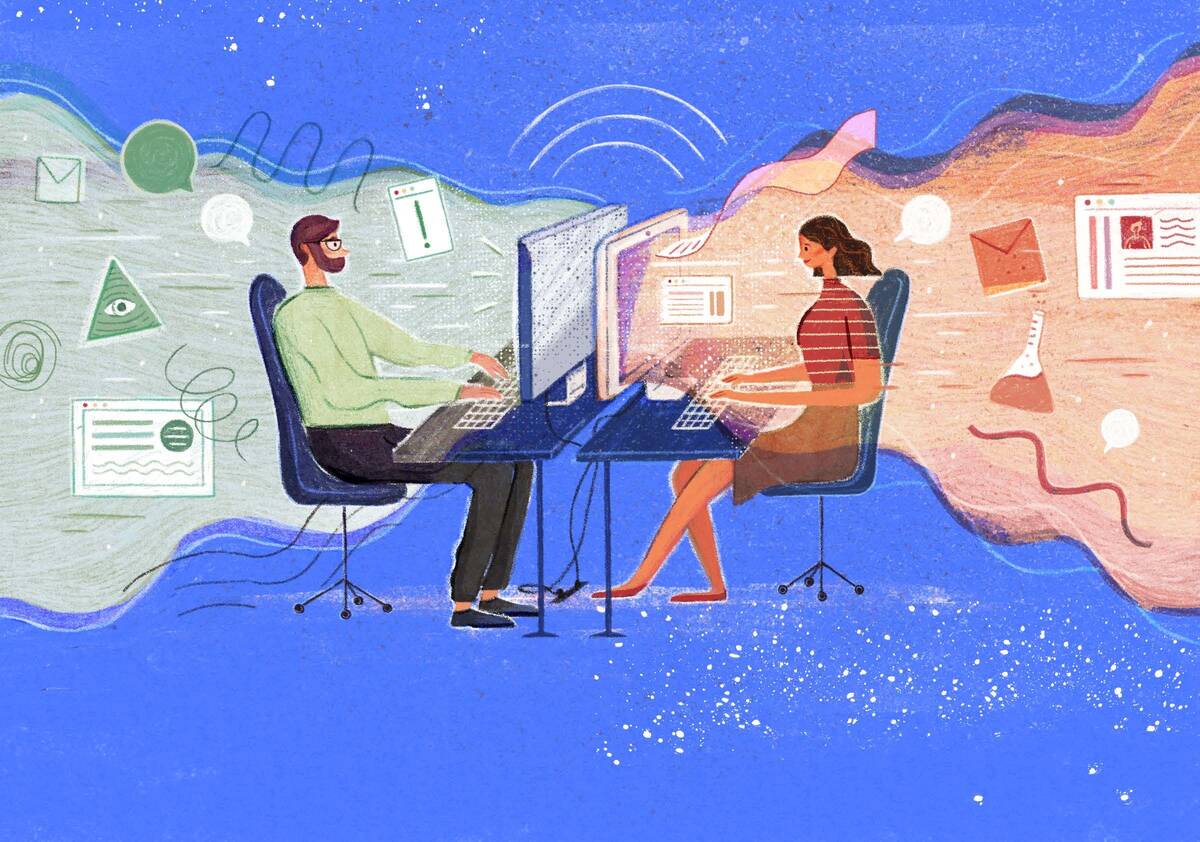Featured Faculty
Clinical Professor of Management & Organizations; Executive Director of Kellogg's Dispute Resolution and Research Center

Morgan Ramberg
As COVID-19 continues its alarming spread, a wave of conspiracies has followed. Where exactly did it come from? And who is to blame for its devastating impact?
Cynthia Wang is a clinical professor of management and organizations at Kellogg who has studied the psychology behind conspiratorial thinking. Kellogg Insight recently spoke with Wang to discuss why the current pandemic has led to so many conspiracy theories, and what policymakers and leaders can do to ensure that the truth finds a receptive audience.
This interview has been edited for length and clarity.
Kellogg Insight: Why is COVID-19 so ripe for conspiracies? What is it about this current moment that is the perfect storm for inspiring so many false beliefs?
Cynthia Wang: When people lack control, conspiracies offer security. So in this particular case, we have the COVID-19 outbreak: we can’t really control that situation. We have all these shelter-in-place orders: we can’t really even control our movements. So because of that, people start forming conspiratorial patterns around the virus itself.
In truth, the virus did come from Wuhan, China, likely a natural transfer from an animal to a human. But the latest conspiracies are that the virus came out of the lab. I read recently that 30 percent of Americans think this!
Insight: But there is some uncertainty about the virus’s origins. We don’t know exactly when or how it moved from an animal to a human, for instance. Do you see this little bit of uncertainty as contributing to these conspiracies?
Wang: Exactly. This is true of all conspiracies. If you think about conspiracies around JFK’s murder or Princess Diana’s death—you can’t prove anything one way or another. That uncertainty allows for conspiracies to be formed.
Insight: So you’ve got the loss of control, and you’ve got some element of uncertainty or lack of proof. Are these the two main ingredients that make a situation ripe for conspiracies? Or are there other factors that play a role?
Wang: Those are two big ingredients. But there is research published more recently that shows that conspiracies also commonly focus on different social groups. Today we are seeing conspiracies going around that black people are immune to COVID-19. Or that, because of this personal immunity, they are super-spreaders. Even across countries there are lots of conspiracies. The Chinese have conspiracies about America. The Americans have conspiracies about the Chinese.
I don’t think this is an “ingredient” necessarily, but I do think we are motivated to assume our group is good and to place blame on members of groups that are different.
Insight: What is COVID-19 teaching people who study conspiracies? Has anything surprised you about the conspiracies that have emerged around the pandemic?
Wang: A lot of these conspiracies are not surprising, which is sad. They’re textbook. The same conspiracies also appeared around the Ebola outbreak: that the virus was formed in a lab, or by the pharmaceutical companies in order to sell drugs, or that the global elites had engineered it in order to impose quarantines and travel bans on everyone else. That’s very common for conspiracies, too: that you have powerful actors acting in concert.
What’s different is that this crisis is hitting us here in America so much closer to home. I don’t have the statistics for this, but I suspect that the decisions people are making to shelter at home or not might be determined by whether they believe these conspiracies. Which then has huge implications for how quickly this virus is going to dissipate.
Insight: You have researched conspiratorial thinking in the past—including how to curb these thoughts. Are there any lessons that can apply to the current situation?
Wang: Yes, we found a difference between “promotion-focused” individuals, who tend to be more go-getting and feel more in control over their environment, and “prevention-focused” individuals, who are more vigilant and try to protect the security they have. This latter group tends to fall prey to conspiracy theories more often. But what we found was that there are interventions that help people be less persuaded by conspiracy theories. So if you ask people to think of a time when they had control over a situation, they see fewer conspiracies in their environment.
Insight: Let’s say I am a policymaker trying to get people to take COVID-19 seriously. I want them to follow social-distancing guidelines or wear masks. Is there any way to use this knowledge to shape my message?
Wang: You could consider framing these public-service messages around the idea of control: “Think about how your actions can help control your own future and the virus in general.”
There’s also the importance of trust. A lot of people don’t trust these messages coming from governments or big organizations. So how can you promote these public-health messages in other ways? Are there people in an in-group who can share this message? Can we all take it upon ourselves to share these messages in communities where we are already trusted members?
Because that’s the way to actually get people to trust that a message is true.